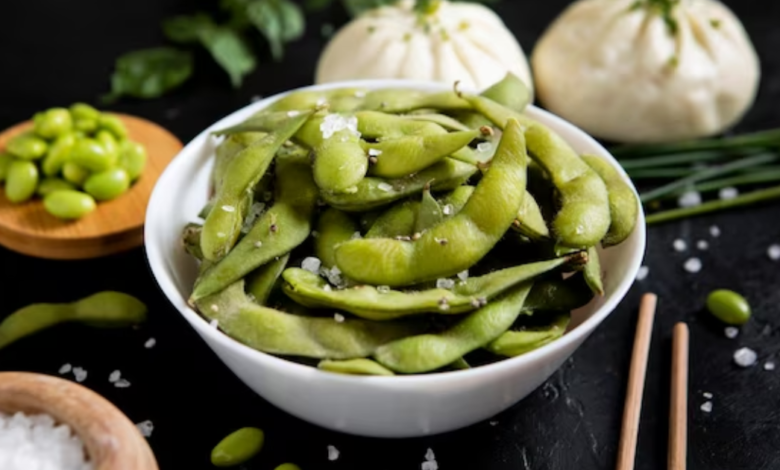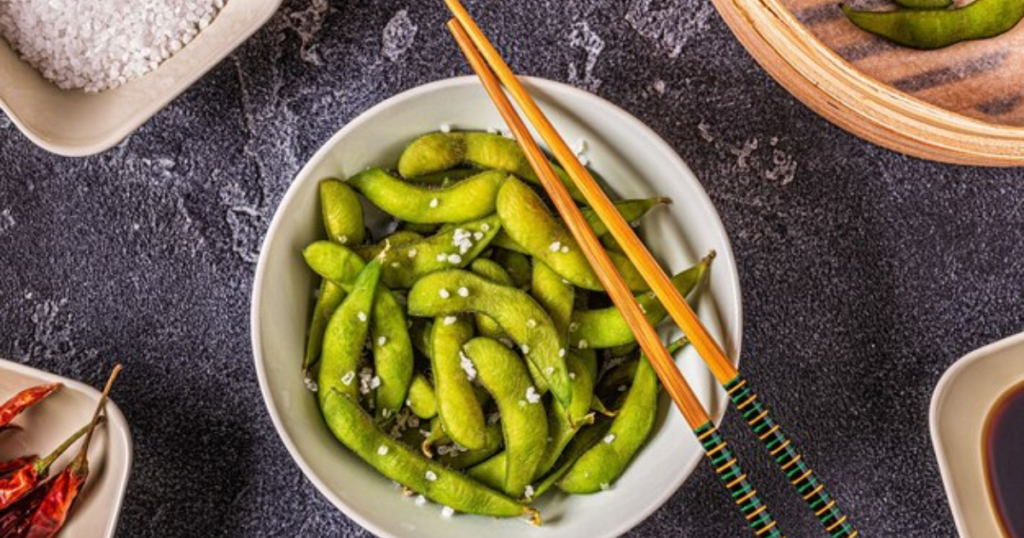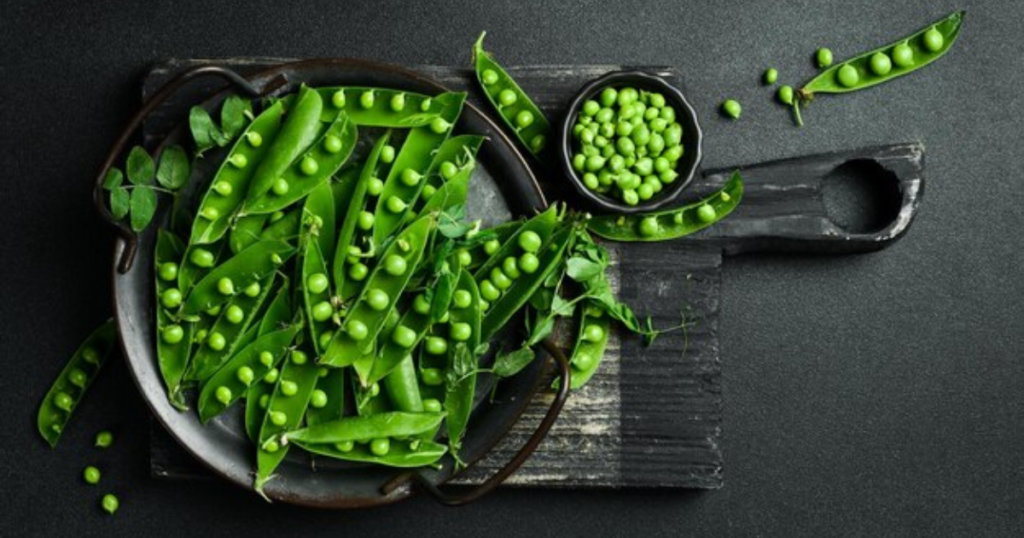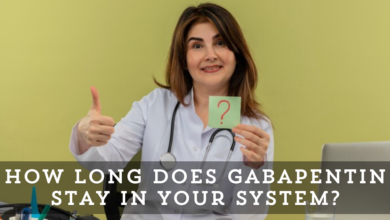Are Wasabi Peas Healthy? Know The Truth

Many people are curious in the nutritional content and possible health advantages of wasabi peas, a popular snack. Are they a healthy option? In this article, we’ll delve into the nutritional composition of wasabi peas, explore their potential health benefits, discuss any associated risks, and provide tips on incorporating them into your diet.
What Are Wasabi Peas?
Roasted green peas are covered in a mixture of flour, sugar, salt, vegetable oil, and wasabi powder to make wasabi peas, a popular snack. The strong, spicy flavor of wasabi, a pungent Japanese condiment, comes from the root of the Wasabia japonica plant.
These peas are usually bright green in color and crisp. Because of their distinctive flavor profile sweet peas, salty spice, and a sharp wasabi kick they are highly appreciated. You can eat wasabi peas alone or with other snacks like almonds or dried fruit.
Wasabi peas are valued not only for their crunchy texture and delicious flavor, but also for possible health benefits. Wasabis includes chemicals that may have antibacterial and anti-inflammatory qualities, and peas are a good source of protein, fiber, and several vitamins and minerals.
How Are Wasabi Peas Made?
Dried peas are coated with a mixture of wasabi powder, sugar, salt, and occasionally additional seasonings to create the popular snack known as wasabi peas. The general process for making them is as follows:
- Preparation of Dried Peas: The first step in the preparation of dried peas is to choose premium dried peas, usually green peas. To get rid of all the dirt and debris, these peas are carefully cleaned.
- Cooking: After that, the dried peas are boiled in water to get the right consistency. Additionally, by softening the peas, this procedure improves their suitability for coating.
- Preparing the Coating: While the peas simmer, a mixture of sugar, salt, and wasabi powder—produced from the pulverized root of the Wasabia japonica plant—is formed. Occasionally, additional flavorings, such as soy sauce or garlic powder, are added. Depending on the intended flavor character, these substances may have different quantities.
- Application of Coating: The prepared mixture is applied to the cooked and drained peas. To ensure that the peas are evenly covered with the seasoning mixture, they can either be mixed in a big bowl or tumbled in a rotating drum.
- Drying or Baking: To eliminate extra moisture and solidify the coating, the peas are usually dried or baked after coating. You have two options for doing this: using an oven or a specific drying method.
- Packaging and Cooling: The seasoned and dried peas are lastly allowed to cool before being packaged. To preserve freshness, they are frequently packed in resealable bags or containers.
This is how you make wasabi peas! Every manufacturer might do it a bit differently, but here’s the gist: they make wasabi peas by following these steps.
Do Wasabi Peas Use Real Wasabi?
Wasabi powder comes from the root of the Wasabia japonica plant. People usually mix it with sugar, salt, and sometimes soy sauce or garlic powder to make traditional wasabi peas. To replicate the taste and appearance of real wasabi. Many commercially made wasabi peas may employ horseradish powder or a mixture of horseradish and mustard combined with green food coloring. This is because genuine wasabi can be quite expensive and challenging to cultivate.

Nutritional Content of Wasabi Peas
Here is a broad summary of wasabi peas’ normal nutritional profile based on a regular serving size of about 1 ounce (28 grams), though the exact brand and recipe used will affect the nutritional value slightly.
- Calories: 120–140 calories approximately
- Protein: Approximately 5-7 grams of protein
- Fat: 4-6 grams of fat, primarily from the peas and any additional oils from the seasoning
- Carbohydrates: Usually 16–20 grams, depending on how the peas are processed and any additional ingredients included. Fiber level varies.
- Sodium: Depending on the seasoning mixture employed, this can be anywhere from 150 to 300 mg or more; the salt and seasoning added to the peas sometimes result in a high sodium level.
- Potassium: Usually in trace amounts, between 100 and 200 mg
- Vitamins and Minerals: Depending on the components in the spice mixture and the peas themselves, wasabi peas may include trace levels of certain vitamins and minerals, including as vitamin C, iron, and calcium.
It’s crucial to remember that different brands and recipes may have varying nutritional values, so it’s a good idea to always read the nutrition label to find out particular details about the product you’re eating. You should eat wasabi peas carefully as part of a balanced diet because they can have lots of salt and other flavorings that make them taste good.
Health Benefits of Wasabi Peas
Wasabi Peas Peasand the nutritional value of the peas itself account for the majority of the possible healthy advantages of wasabi peas. The following are some possible health advantages of eating wasabi peas:
- Plant-based protein: Peas are a source of protein essential for tissue growth and repair.
- High fiber: Peas are rich in dietary fiber, aiding in gut health and reducing the risk of chronic diseases like diabetes and heart disease.
- Vitamins and minerals: Peas contain vitamins K, C, A, folate, iron, and manganese, crucial for energy metabolism, bone health, immune system, and vision.
- Antioxidants: Peas and wasabi flavor contain antioxidants, reducing the risk of oxidative stress and inflammation.
- Low in saturated fat: Peas are a low-fat food, promoting weight control and heart health.
- Potential anti-inflammatory qualities: Wasabi, the primary flavoring, contains chemicals that may reduce inflammation.
Overall, wasabi peas can be yummy and make a good snack. Watch out because they could contain plenty of salt, and sometimes people mix them with sugar and even more salt. So, it’s best to eat them a little bit at a time. To optimize their potential health advantages, include them in a balanced diet with lots of fruits, vegetables, whole grains, and lean proteins.
Are Wasabi Peas Healthy?
Yes, wasabi peas can be a healthy snack if consumed in moderation. They are usually made with dried peas coated in a wasabi spice produced from horseradish and mustard seed. Here are some of the reasons why they are healthy:
- Protein: Peas provide plant-based protein, which is required for muscle repair and overall body function.
- Fiber: Peas are high in dietary fiber, which aids digestion and makes you feel full, potentially helping with weight management.
- Vitamins and minerals: Peas include a variety of vitamins and minerals, including vitamin K, vitamin C, manganese, and folate, which are beneficial to overall health and well-being.
- Low in fat: Wasabi peas are often low in fat, particularly saturated fat, making them a better alternative to many other snack foods that are high in bad fats.
However, wasabi peas can be heavy in sodium and may contain additional sugars or harmful oils in the seasoning. Consuming them in moderation as part of a balanced diet is essential for reaping the possible health advantages without overdoing them on less healthy ingredients. Individuals with specific dietary limitations or health concerns should also exercise caution when consuming wasabi peas, especially given the seasoning’s fiery character.
More to Read: Are Pure Protein Bars Healthy?
Antioxidant Properties of Wasabi Peas
Wasabi peas have antioxidants that make them healthy, especially if you use real wasabi powder. These antioxidants in the peas and the spice can give you good benefits for your health. The following are some possible ways that wasabi peas might benefit from antioxidants:
Pea Antioxidants:
Peas have antioxidants like flavonoids, carotenoids, and phenolic compounds. These antioxidants aid in defending the body’s cells against oxidative stress and inflammation brought on by dangerous free radicals, which are metabolic waste products.
Wasabi Antioxidants:
The strong flavor and aroma of wasabi, the primary flavoring in wasabi peas, come from chemicals called isothiocyanates. Researchers studied if isothiocyanates can make inflammation go down and help fight bad stuff in the body. They may improve general health and maybe minimize the risk of chronic diseases by assisting the body in reducing inflammation and oxidative stress.
Combined Effect:
The antioxidant qualities of the two ingredients—peas and wasabi—may enhance one another when combined to create wasabi peas. This suggests that the antioxidants found in wasabi and peas may complement one another more successfully to combat free radicals and guard against oxidative damage.
It’s crucial to remember that wasabi peas’ precise antioxidant content and activity might change based on a number of variables. Including the particular components utilized in the seasoning blend and the processing techniques employed. Furthermore, even though antioxidants are good for your health in general, a balanced diet should consist of a range of fruits, vegetables, whole grains, and other nutrient-dense foods.

Potential Downsides of Wasabi Peas
Wasabi peas can make a delicious and filling snack, but there may be certain drawbacks to take into account:
- High Sodium Level: Seasoning with salt can increase sodium levels, potentially causing blood pressure issues and increasing heart disease risk.
- Added Sugars: Some wasabi pea varieties may contain added sugars, which can lead to weight gain, insulin resistance, and chronic illnesses.
- Overconsumption: Consuming too many wasabi peas can lead to weight gain and other health issues.
- Potential Digestive Discomfort: Consuming wasabi peas may cause stomach discomfort for those with digestive problems or sensitivity to spicy foods.
- Allergies: Avoiding wasabi peas can help reduce allergic responses to common ingredients like peas, wheat, soy, or tree nuts.
You should eat wasabi peas sometimes as a snack. But to stay healthy, you need to watch how much you eat, check for added sugars and allergies, and eat other healthy foods too.
Sodium Levels in Wasabi Peas and Blood Pressure Concerns
Wasabi peas, a popular snack, contain high sodium content, which can lead to high blood pressure. The sodium content can range from 150 milligrams to over 300 milligrams per serving, contributing to the recommended daily sodium intake of 2,300 milligrams for healthy adults.
Excess sodium intake can increase blood pressure, putting pressure on blood vessel walls and increasing the risk of heart disease, stroke, and cardiovascular complications. To manage sodium intake, individuals should moderate their sodium intake, choose low-sodium or reduced-sodium varieties, and maintain a balanced diet rich in fruits, vegetables, whole grains, lean proteins, and healthy fats. Proper portion control and pairing with protein or fiber can also help mitigate the impact on blood pressure.
Incorporating Wasabi Peas into a Balanced Diet
Wasabi peas can be a pleasant and pleasurable snack that also allows you to take advantage of some of the nutritional healthy benefits they have to offer when included in a balanced diet. The following advice will help you include wasabi peas in your diet without going overboard:
- Moderation is key when eating wasabi peas. Choose a portion size based on the nutrition label, usually one ounce (28 grams). Avoid eating straight from the bag.
- Pair with nutrient-rich dishes to counter the crispness of wasabi peas.
- Use as salad toppings for added protein and fiber.
- Add to trail mix for a mix of healthy fats, protein, and carbohydrates.
- Include in snack mixes for a balanced diet.
- Enjoy as a standalone snack, but maintain a balanced diet.
- Stay hydrated by drinking plenty of water due to the saltiness of wasabi peas.
Wasabi peas have a distinct flavor and texture, and you can enjoy them in moderation while still adhering to a balanced and healthful eating pattern by combining them with other nutrient-rich foods.

Conclusion
In conclusion, if eaten in moderation, wasabi peas can be a tasty and nutritious complement to your healthy diet. They offer possible health benefits like antioxidant qualities and support for the digestive system, in addition to being an excellent source of protein, fiber, and other minerals. But it’s important to be aware of their possible allergies and salt content. Wasabi peas have a tasty crunch that you may enjoy while promoting your general health and well-being when you include them in a balanced diet.
Frequently Asked Question
What ingredients are in wasabi peas?
Usually, dried peas are coated with a mixture of flour, sugar, oil, salt, and wasabi powder to make wasabi peas. What gives them that fiery kick is wasabi powder!
Do wasabi peas have health benefits?
Like any snack, wasabi peas can be pleasant, but it’s recommended to eat them in moderation. Given that peas are a source of fiber and protein, they do have certain nutritional advantages. But keep in mind that they frequently have additional sugar and salt, so moderation is key.
Are there any health benefits to wasabi peas?
Yes, wasabi peas can offer certain health benefits when consumed in moderation. The plant-based protein and fiber found in peas itself can aid in keeping you feeling content and full. Furthermore, there are substances in the wasabi coating that might have antibacterial qualities.
Do wasabi peas have a lot of calories?
Wasabi peas are frequently coated with sugar and oil, which makes them high in calories. If you are eating them as a snack, it is crucial to pay attention to the portion quantities. Overindulging in food might result in ingesting more calories than your body requires, perhaps causing weight gain over time.




